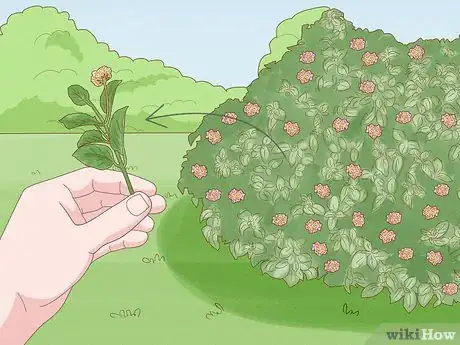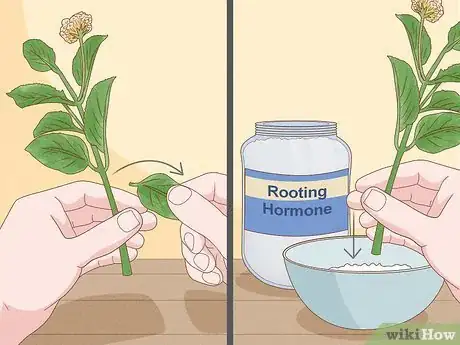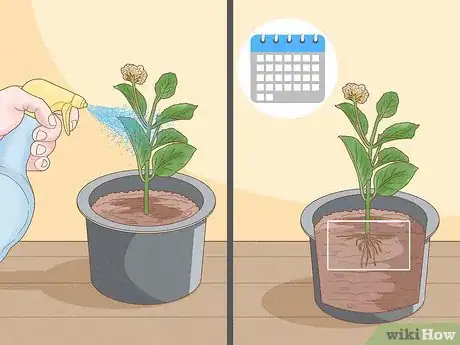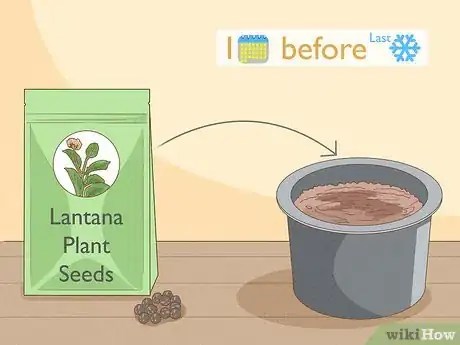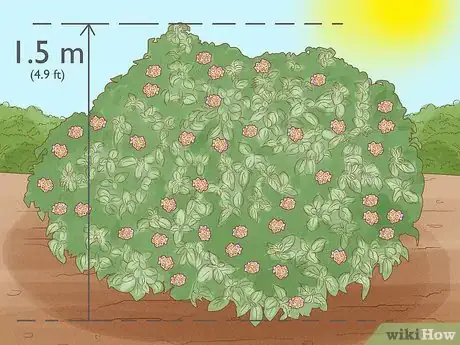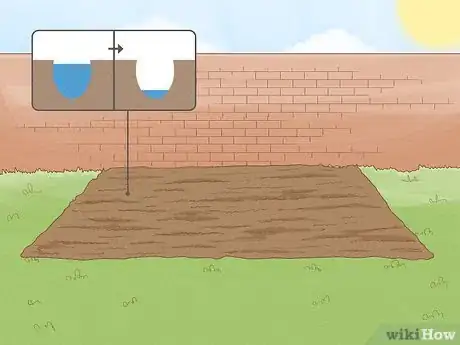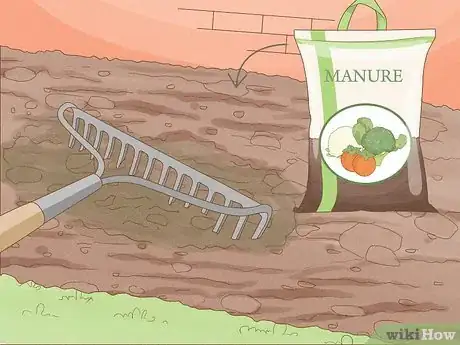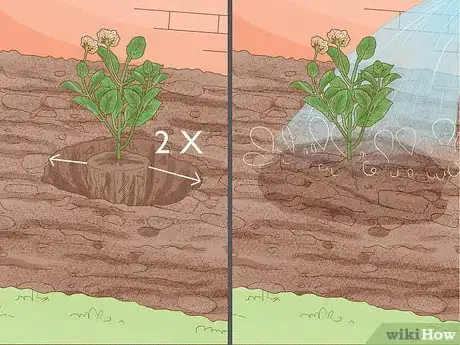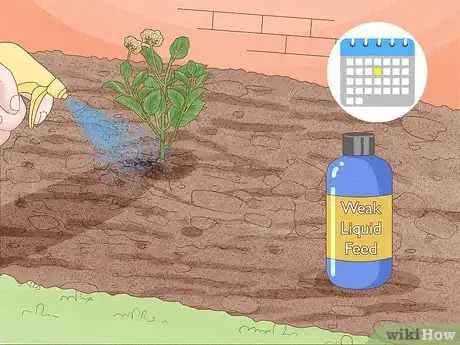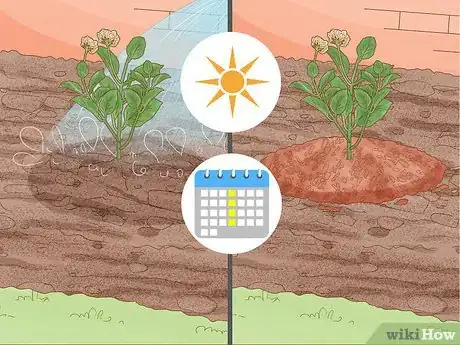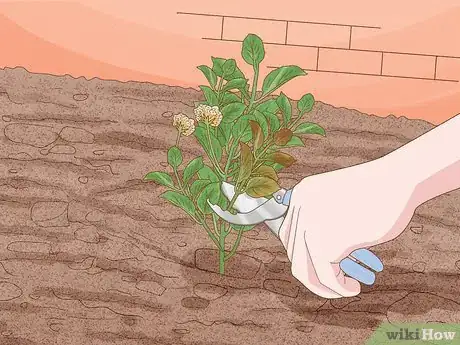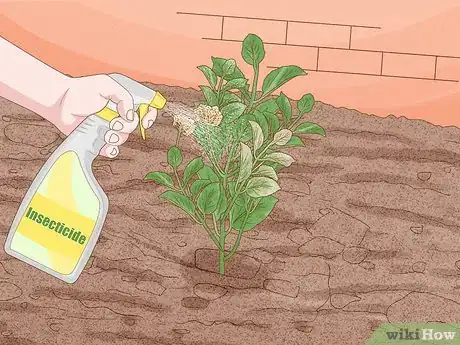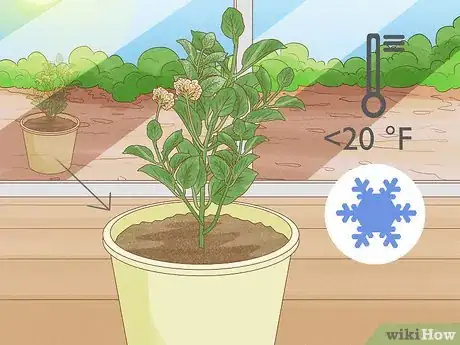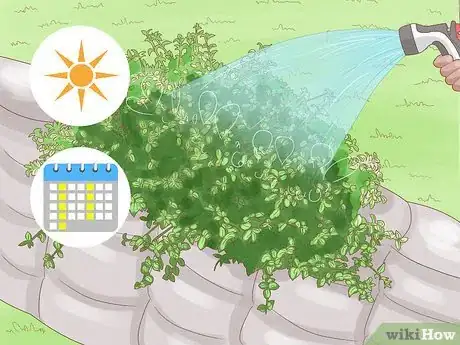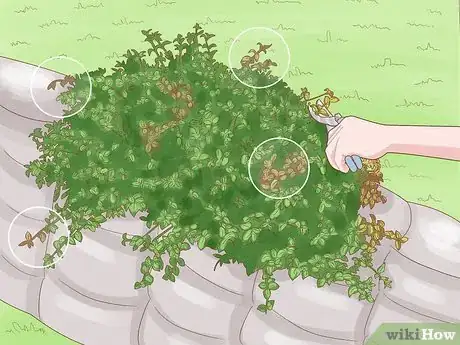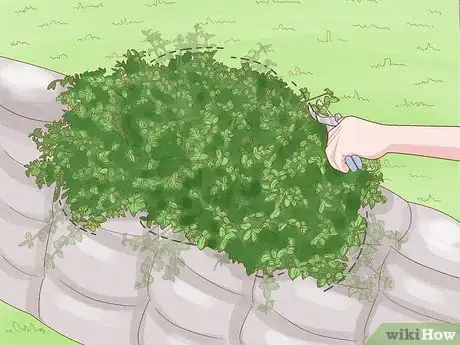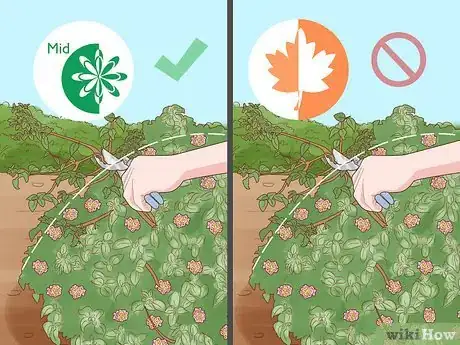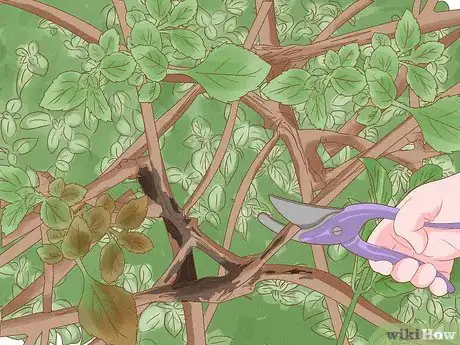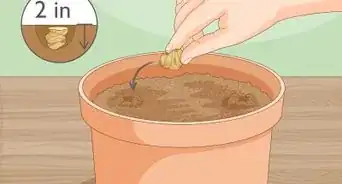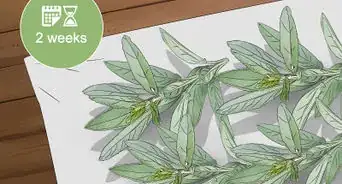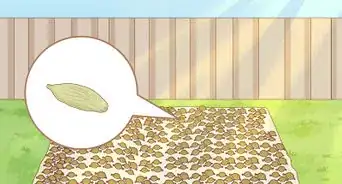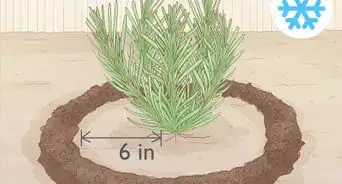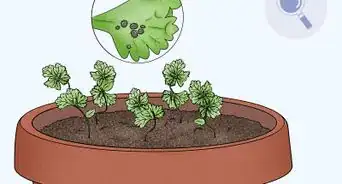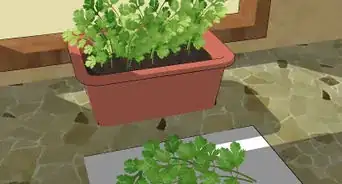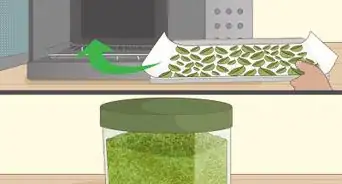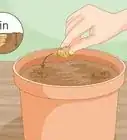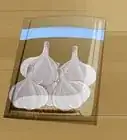This article was co-authored by Jon Rowland. Jon Rowland is a Plant Specialist and the Founder of the Green House Center blog. With over eight years of plant and garden experience, he specializes in greenhouse care, lawn and garden maintenance, and home appliance recommendations. Jon aims to share his knowledge so that others can live a more convenient, efficient, and environmentally friendly lifestyle.
There are 10 references cited in this article, which can be found at the bottom of the page.
wikiHow marks an article as reader-approved once it receives enough positive feedback. In this case, several readers have written to tell us that this article was helpful to them, earning it our reader-approved status.
This article has been viewed 135,836 times.
Lantana (Lantana camara), also known as Yellow Sage or Jamaican Mountain Sage, is an evergreen plant.[1] Perennial Lantanas grow in warmer zones and annual Lantanas prefer cooler ones. The Lantana plant grows as a bush or shrub; there are also trailing varieties. Some bear yellow flowers that turn red and orange as they age, while others have pink and yellow blooms. Trailing varieties include the drought-tolerant Lantana montevidensis (known as Trailing or Creeping Lantana), which bears purple flowers and blooms year round in warmer zones.
Steps
Propagating Lantana Plants
-
1Be aware of the benefits of growing from cuttings. If you grow Lantana from seed you have harvested, you may not get a plant exactly like the parent plant. When you propagate Lantana from cuttings, the plants you grow will be more predictable.
- Propagate Lantana cuttings in the spring.
-
2Prepare the cutting for propagation. Take about five inches of fresh, healthy-looking growth, remove the lower leaves and dip the cutting in rooting hormone or powder.[2] Then insert the lower two inches into a pot with moist cutting compost.Advertisement
-
3Cover your cutting. Cover the pot that you have placed your cutting in either with a clear plastic bag or an inverted clear plastic bottle with the spout cut off; doing this makes a mini greenhouse of sorts.
- Make sure the plastic doesn’t touch the cuttings; use plant sticks to support the bag and keep it away from the stem if necessary.
-
4Keep the cutting moist. If you keep your cutting moist, it should root in about a month. After the last frosts have passed you can harden your cutting off and plant it out in the garden.
- Hardening off means that you slowly acclimatize your cutting to outdoor temperatures. This could mean moving it outside during the day, and then storing it in your garage overnight.
-
5Grow your Lantanas from seed if you can’t get a healthy cutting. If you do grow your Lantana from seed, start the Lantanas off indoors about a month before the last frosts occur. Seeds may take a few weeks to germinate.[3]
- If you are growing from seeds, fill a pot with potting soil and plant the seeds. Keep the pots in a cool dry place out of direct sunlight.
Planting and Caring for Lantana Plants
-
1Understand that Lantanas can grow to a length of 1.5 meters (4.9 ft). Lantana will grow fairly slowly. Non-creeping varieties usually grow to a height of about 1.5 meters (4.9 ft).
- Trailing varieties only grow to about 20 inches (50.8 cm) in height but spread by several feet.
-
2Find a spot with well-draining soil. Lantana prefers a moist but well drained soil in full sun.[4] It will benefit from being fed regularly during the growing season, which occurs in spring and summer.
- Lantana prefers to be kept moist even over winter.
-
3Prepare the soil. Start by digging the soil over and incorporating some well-rotted manure or compost to enrich the soil and improve drainage. Consider incorporating a slow-release fertilizer.
-
4Dig a hole as deep as your plant and twice as wide.[5] Put your Lantana in and fill the hole with soil, pressing it down with your hands. Give the plant a good soak and continue watering the plant twice a week (unless it’s very rainy) until the plant is well established; this usually takes a few months.
- Try to water the ground rather than soak the foliage.
-
5Consider feeding your plant with a light feed in the spring. Established Lantana plants don’t require much attention although they will appreciate a feed in the spring.
- Don’t over feed them but try to apply a weak liquid feed with a general purpose fertilizer (avoid those high in nitrogen relative to other ingredients) once a month during the growing season.
-
6Water your Lantana once a week in dry periods and lay down mulch.[6] Apply a thick layer of mulch when the ground isn’t too cold; this will help conserve moisture and protect the roots. Once a year, remove the old mulch and reapply a fresh layer.
-
7Trim off the growing tips every few weeks over the growing season to encourage new blooming. Cut the top inch or two from the stem tips, always cutting just above a leaf set. Remove any dead or damaged growth.
- Give it a good prune in the early spring before it begins growing again; cut it back to within about a foot of the ground,
-
8Fight pests. Lantana will be affected by a few pests and diseases. Mildew may be a problem if the plants don’t get enough light. Whiteflies and lace bugs may also affect the plant.
- Try using a spray insecticide to control these pests if they emerge.
-
9Bring your plant indoors during harsh winters.[7] If you are in a zone cooler than zone 9 (where temperatures drop below 20 degrees Fahrenheit or -6.7 degrees Celsius), you’ll need to bring your plant indoors in the fall. Water it occasionally through the winter.
- Move your plant outside again when the temperatures improve.
Ongoing Care for Trailing or Creeping Lantana
-
1Give your trailing Lantana lots of light. Trailing varieties of Lantana are pretty robust and will tolerate drought but do need plenty of light. They will tolerate a small amount of shade for some of the day but you’ll see them grow leggy (with long stems rather than compact bushy growth) and produce fewer blooms if they aren’t getting enough sun and water.
- You can encourage bushy growth to make good ground cover by pinching the plant back. To do this, remove the stem tips just above where each stem branches into two stems. This will encourage more side branches to form.
-
2Don’t let your trailing Lantana get too dry. Although Trailing Lantana tolerates drought, it will bloom better if it doesn’t get too dry.
- Water once or twice a week during dry periods.
-
3Trim your Lantana. Removing spent flowers will encourage new ones to form so don’t be shy about trimming the bush during the growing season. You should try to trim just above a leaf set.
-
4Prune your Trailing Lantana. Every few years the Trailing Lantana may get a little too woody and overgrown. A vigorous prune to within a foot of the base will usually rejuvenate the plant. Do this over the dormant season in winter or early spring.[8]
Pruning Lantana Plants
-
1Prune before growth begins. Lantana benefits from being pruned in the mid-springtime before growth begins.[9] This will improve flowering later in the season.
- Avoid pruning in the fall.
-
2Remove any dead, damaged or diseased growth. Remove any branches that are crowded or grow over other branches. Cut back the Lantana by about a third of the size of the plant.
- Give the plant a liquid feed after pruning.
-
3Lightly prune during the growing season. During the growing season you should lightly prune your Lantana, as this will encourage new flowering. Take about two inches off each growing tip with a sharp pair of garden scissors. This should encourage new growth.
- It’s always a good idea to feed the plant after pruning.
Expert Q&A
-
QuestionWhat do you need to do to propagate plants in general?
 Jon RowlandJon Rowland is a Plant Specialist and the Founder of the Green House Center blog. With over eight years of plant and garden experience, he specializes in greenhouse care, lawn and garden maintenance, and home appliance recommendations. Jon aims to share his knowledge so that others can live a more convenient, efficient, and environmentally friendly lifestyle.
Jon RowlandJon Rowland is a Plant Specialist and the Founder of the Green House Center blog. With over eight years of plant and garden experience, he specializes in greenhouse care, lawn and garden maintenance, and home appliance recommendations. Jon aims to share his knowledge so that others can live a more convenient, efficient, and environmentally friendly lifestyle.
Plant Specialist First, you need all the essential equipment. If you are not someone who takes this as a full-time job, you will only need a pair of clippers, a sharp knife, and a pair of gloves. Those are the fundamental tools. However, it depends on the propagation methods you’re about to use. There are four common ways to do propagation: leaf cuttings, stem cuttings, rhizome propagation, tuber propagation and water propagation.
First, you need all the essential equipment. If you are not someone who takes this as a full-time job, you will only need a pair of clippers, a sharp knife, and a pair of gloves. Those are the fundamental tools. However, it depends on the propagation methods you’re about to use. There are four common ways to do propagation: leaf cuttings, stem cuttings, rhizome propagation, tuber propagation and water propagation. -
QuestionWhen should I harvest the seeds from my lantana?
 NinoxTop AnswererYou can harvest the seeds when the fruits are black. Be careful when doing this, as the fruits are toxic.
NinoxTop AnswererYou can harvest the seeds when the fruits are black. Be careful when doing this, as the fruits are toxic. -
QuestionCan I cut back my plant after a freeze?
 Community AnswerWait until the plant starts growing again (assuming it isn't dead entirely), and then cut away all the dead material. Check the base of the stem for new growth, since the roots are the part most likely to have survived.
Community AnswerWait until the plant starts growing again (assuming it isn't dead entirely), and then cut away all the dead material. Check the base of the stem for new growth, since the roots are the part most likely to have survived.
Warnings
- Any diseased growth should not be composted as it may infect other plants. Instead, burn it or discard with household waste.⧼thumbs_response⧽
- Many people dislike the smell of the Lantana plant. The plant is considered quite invasive because of the way it self-seeds. It will also attract bees, so possibly it isn’t a good choice for planting near seating areas in case of stings.⧼thumbs_response⧽
- You should note the plant is highly toxic if eaten and may not be a good choice around very young children, who may be tempted to eat the shiny red and blackberries.[11]⧼thumbs_response⧽
References
- ↑ https://plants.ifas.ufl.edu/plant-directory/lantana-camara/
- ↑ https://youtu.be/xqNxt3t1DAk?t=210
- ↑ http://www.gardening.cornell.edu/homegardening/scenea408.html
- ↑ https://www.rhs.org.uk/Plants/99415/Yellow-sage/Details
- ↑ https://www.wilsonbrosgardens.com/how-to-plant-prune-fertilize-water-hardy-lantana-plants.html
- ↑ https://www.todayshomeowner.com/how-to-grow-lantana-in-your-garden/
- ↑ https://balconygardenweb.com/how-to-grow-lantana-care-and-growing-lantana/
- ↑ https://www.joyusgarden.com/pruning-lantana-2-types/
- ↑ https://www.todayshomeowner.com/how-to-grow-lantana-in-your-garden/
About This Article
Lantana plants can grow as bushes or shrubs, and while some have yellow flowers that turn red and orange as they age, others have pink and yellow blooms. If you want to grow a Lantana plant, you can start by either preparing a cutting from a fully formed plant or growing it from seed. Plant the cutting or seed in a spot that has well-draining soil and full sunlight. Continue watering it twice a week until it’s well established, which typically takes a few months. In the spring, you can give your plant a general-purpose fertilizer once a month to help it grow. During the growing season, cut the top 1 to 2 inches from the stem tips to encourage new blooming. Then, give it a good prune in the early spring, cutting it back to within about a foot from the ground. To learn how to deal with pests on your Lantana plants, keep reading!
